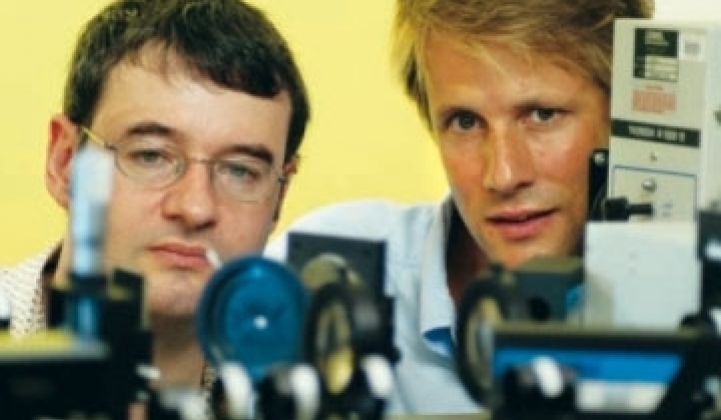Sydney, Australia-based BT Imaging (BTi), just announced a $3.8 million A2 funding round from Applied Ventures, the VC arm of Applied Materials (NASDAQ: AMAT) along with investors Allen & Buckeridge and Uniseed.
BTi improves solar cell efficiency and manufacturing yields by applying luminescence imaging to the manufacturing and testing of silicon wafers and solar cells.
BTi’s luminescence-imaging systems are used for research, product and process development, production manufacturing inspection, and quality control of silicon blocks, wafers, photovoltaic cells and PV modules. Originally developed at the University of New South Wales, BT Imaging's photoluminescence technology allows real-time electronic inspection of every wafer or solar cell processed through a manufacturing line.
BTi started out building R&D and lab equipment for testing crystalline silicon solar cells. After shipping a number of R&D tools, the feedback was that customers needed in-line tools. "In-situ monitoring capability is truly a gaping hole in PV manufacturing," said a colleague at an emerging PV cell firm. Applied Materials became interested in the firm when they saw the inline tools at a recent trade show in Shanghai.
I spoke with Wayne McMillan the VP of Sales and Marketing. He spoke of the improvements that BTi enables in efficiency and yield from silicon blocks all the the way to the module level. McMillan claims that their tools are much faster and provide much better resolution than existing solutions.
The photoluminescence technology used by BTi "uniformly illuminates the entire sample with Near IR laser light and generates electron and hole pairs." As those carriers recombine, the light is collected with a special CCD-type camera. Anything that looks dark on the image is electrically poor.
The customer is looking for flaws and defects -- crystal dislocation defects and impurities. Dislocations can reduce absolute cell efficiency by 1 percent. The customer can recycle flawed blocks and wafers prior to the next processing steps.
Their R&D tool is sold to ingot, wafer, cell and module makers, and about 20 have been sold so far. New 3600-wafer-per-hour tools will be introduced at Eu PVSEC in September.
But it's not the imaging that the customers really need -- it's more what you do with the data and how it is classified. According to the VP, "In production the customer doesn't want images -- they want data and analysis." So software and algorithms are as important as the imaging itself.
BT Imaging systems can be used to predict cell performance, material quality control, process and material faults, and for process control and debugging. The company’s inspection and QC control systems are used by wafer and cell manufacturers in Europe, Australia, Taiwan, China, and Japan.
The bottom line according to McMillan is that "the tool helps improve efficiency and yield."
Firms like AccuStrata, Laytec, and Brightview Systems are also looking at PV cell metrology and process control, although mostly in thin film.
The company has about 30 employees, most of whom are based in Australia. BTi is using distributors for worldwide sales.



